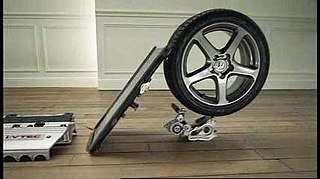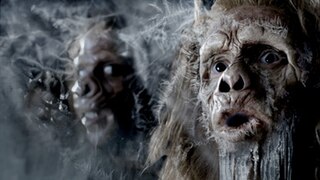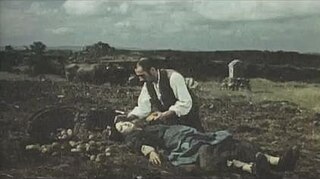
"Cog" is a British television and cinema advertisement launched by Honda in 2003 to promote the seventh-generation Accord line of cars. It follows the convention of a Rube Goldberg machine, utilizing a chain of colliding parts taken from a disassembled Accord. Wieden+Kennedy developed a £6 million marketing campaign around "Cog" and its partner pieces, "Sense" and "Everyday", broadcast later in the year. The piece itself was produced on a budget of £1 million by Partizan Midi-Minuit. Antoine Bardou-Jacquet directed the seven-month production, contracting The Mill to handle post-production. The 120-second final cut of "Cog" was broadcast on British television on 6 April 2003, during a commercial break in ITV's coverage of the 2003 Brazilian Grand Prix.

DDB Worldwide Communications Group LLC, known internationally as DDB, is a worldwide marketing communications network. It is owned by Omnicom Group, one of the world's largest advertising holding companies. The international advertising networks Doyle Dane Bernbach and Needham Harper merged their worldwide agency operations to become DDB Needham in 1986. At that same time the owners of Doyle Dane Bernbach, Needham Harper and BBDO merged their shareholdings to form the US listed holding company Omnicom. In 1996, DDB Needham became known as DDB Worldwide.
The Cannes Lions International Festival of Creativity is a global event for those working in creative communications, advertising, and related fields. It is considered the largest gathering of the advertising and creative communications industry.
Tribal Worldwide is a global network of interactive agencies, established in 2000, when the advertising company DDB integrated all its interactive-web properties under the Tribal brand. Tribal Worldwide is part of Omnicom Group's DDB Worldwide.
Adam Berg is a Swedish director and writer.

Evolution, also called The Evolution Of Beauty, is an advertising campaign launched by Unilever in 2006 as part of its Dove Campaign for Real Beauty, to promote the newly created Dove Self-Esteem Fund. The centre of the Unilever campaign is a 75-second spot produced by Ogilvy & Mather in Toronto, Ontario, Canada. The piece was first displayed online on 6 October 2006, and was later broadcast as a television and cinema spot in the Netherlands and the Middle East. The ad was created from the budget left over from the earlier Daughters campaign, and was intended to be the first in a series of such online-focused campaigns by the company. Later such videos include Onslaught and Amy.Evolution was directed by Canadian director Yael Staav and Tim Piper, with sound design handled by the Vapor Music Group, and post-production by SoHo.

noitulovE is a British television and cinema advertisement launched by Diageo in 2005 to promote Guinness Draught stout. The 60-second piece formed the cornerstone of a £15 million advertising campaign targeting men in their late twenties and early thirties. The commercial shows, in reverse, the adventures of three characters who evolve from mudskippers to present day humans before tasting Guinness in a London pub. The commercial was handled by the advertising agency Abbott Mead Vickers BBDO, with a budget of £1.3M. It was directed by Daniel Kleinman. Production was contracted to Kleinman Productions, with post-production by Framestore CFC. It premiered on British television on 3 October 2005.

Good Doctor is a television and cinema advertisement released in 2002 by Interbrew to promote its Stella Artois brand of lager within the United Kingdom. The 100-second spot was produced by advertising agency Lowe Lintas & Partners in London. Good Doctor premiered on British television in January 2002, with later appearances in cinemas. It is the seventh piece in the Jean de Florette-inspired "Reassuringly Expensive" series that had been running since 1992. The advert was directed by Czech director Ivan Zacharias with help from the production company Stink and post-production work by The Moving Picture Company. The commercial was a popular, financial, and critical success, boosting sales during the period in which it ran, and receiving more awards than any other campaign in 2002, including a Cannes Gold Lion, an Epica Award and several prizes from the D&AD Awards.

"Ok, You're Right" is the first promotional single by rapper 50 Cent from his fourth album, Before I Self Destruct. It also appears as the first promo single for his mixtape War Angel LP, the song is also featured on Tony Yayo's mixtape The Swine Flu.

HALion is a software instrument application, created by German music software company Steinberg for macOS and Windows. It uses a sample-based approach to emulate the acoustic sounds of a full orchestra, such as the strings, brass, woodwind, and percussion sections, with multiple configurations for each instrument, allowing for variations in timbre. It can also use multiple forms of sound synthesis to produce other software synthesizer audio.

Cut is a British advertising campaign launched in 2009 by the charitable organisation Women's Aid to promote awareness of domestic violence. The campaign was created by advertising agency Grey London, and centres on a 120-second commercial starring Keira Knightley. The commercial was supported by poster and online components. Cut was directed by Joe Wright and produced by Dominic Delaney. Post-production work was handled by Big Buoy and Prime Focus. The campaign drew a significant amount of media attention, especially after advertising approval body Clearcast prohibited the short film from appearing on even post-watershed television, due to several particularly violent scenes. The title of the piece refers to the filmmaking practice of cutting.
Mountain is a 2003 television and cinema advertisement launched by Sony Corporation to promote the PlayStation 2 video game console. The budget for production and advertising space purchases for the 60-second piece amounted to £5m across all markets. The commercial depicts a Brazilian crowd congregating to form a mountain of human bodies, all competing to reach the top of the pile. The campaign surrounding Mountain was handled by advertising agency TBWA London. The commercial was directed by Frank Budgen. Production was contracted to Gorgeous Enterprises, with post-production by The Mill. Mountain premiered in 30 countries on 13 November 2003.

Lamp is a television and cinema advertisement released in September 2002 to promote the IKEA chain of furniture stores in the United States. The 60-second commercial was the first part of the "Unböring" campaign conceived by advertising agency Crispin Porter + Bogusky, and follows a lamp abandoned by its owner. It was produced by the production company Morton/Jankel/Zander, and was directed by Spike Jonze. Post-production and editing was handled by Spot Welders and sound design by the California-based MIT Out Sound. The commercial aired concurrently with another IKEA piece in the same vein, titled Moo Cow. Lamp, and its associated campaign, was a popular, critical, and financial success. Sales of IKEA furniture increased by eight percent during the period in which the commercial ran, and Lamp received a number of awards, including a Grand Clio and the Grand Prix at the Cannes Lions International Advertising Festival, considered the most prestigious accolade granted by the advertising community.

Space Chair is a British television and cinema advertisement launched by Toshiba in 2009 to promote its Regza SD LCD televisions. The 60-second piece, following the launch of an armchair into near space attached to a weather balloon, is the second in the "Projects" campaign, following on from Time Sculpture. The launch, which reached 98,268 feet (29,952 m), set a world record for Highest High-Definition Television Commercial. Space Chair premiered on European and Japanese television on 16 November 2009.

The Life, also known as We Are ODST, is a television and cinema advertisement launched in 2009 by Microsoft to promote the first-person shooter Halo 3: ODST in the United States. The 150-second piece follows a young soldier through enlistment, training, and battle as an Orbital Drop Shock Trooper (ODST), analogous to a paratrooper that drops from space to a battlefield. The Life was created by advertising agency T.A.G., an offshoot of McCann Erickson. Production of the commercial itself was handled by production company Morton/Jankel/Zander (MJZ). It was directed by Rupert Sanders, and post-production was conducted by Asylum. It was filmed in Hungary, just outside Budapest in a coal mine and abandoned factories to give the sequence an "Eastern Bloc" aesthetic. The commercial and its associated campaign proved hugely successful; on the week of its launch, Halo 3: ODST became the top-selling game for the Xbox 360 worldwide, and over 2.5 million copies were sold within the first few weeks of release. The Life went on to win a number of honours from the advertising and entertainment industries, including two Clio Awards, a London International Advertising Award and several honours from the Cannes Lions International Advertising Festival, the most prestigious awards ceremony in the advertising industry.

Time Sculpture is a British television and cinema advertisement launched in 2008 to promote Toshiba's high-definition television upscaling technology. The piece, which comprised a collection of interacting loops sequenced into a moving shot, was created in collaboration with advertising agency Grey London, based on a video art proposal by director Mitch Stratten. Time Sculpture holds the world record for the greatest number of moving image cameras used in a single shot.

Tag is a television and cinema advertisement launched by Nike Inc. in 2001 to promote its line of sportswear in the United States. It was one of four pieces forming the television component of the $25m "Play" campaign, which had been running for several months. Tag was created by advertising agency Wieden+Kennedy. Production was handled by production company Gorgeous Enterprises, who assigned director Frank Budgen to oversee the project. Filming took place in Toronto, Ontario.
Frank Budgen was a British commercial director and co-founder of Gorgeous Enterprises, a London-based film production company. He was voted as the Directors Guild of America commercial director of the year in 2007. His notable works include Tag and Mountain.
Caramel Pictures is a production agency with offices in Amsterdam, London, and Miami. Formerly known as Will van der Vlugt Film Productions, it was renamed to Caramel Pictures in 2007.
Stink Studios is a global creative studio with offices in London, New York, Los Angeles, Paris, Shanghai, Berlin and Sao Paulo. The company is part of the Stink Group, an independently-owned global creative network. Stink Studios creates digital and integrated advertising working across film, design, technology and strategy. Its clients include Google, Spotify, Twitter, Ray-Ban and Nike.













